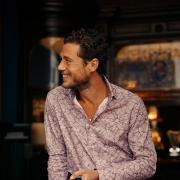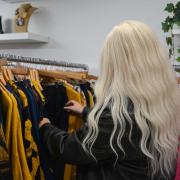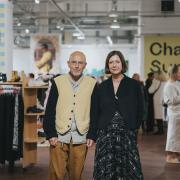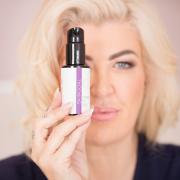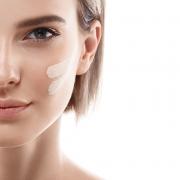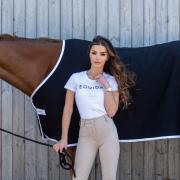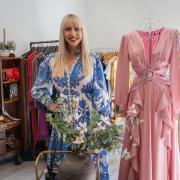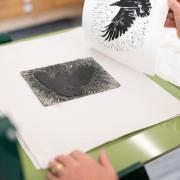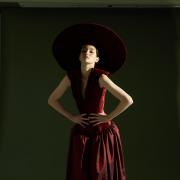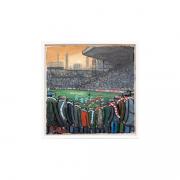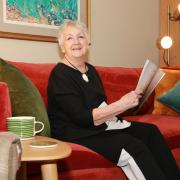Dr Maria Balshaw, the high profile director of Manchester’s art galleries, tells Janet Reeder why fashion plays an important role in her life.

Manchester art galleries director Dr Maria Balshaw has become something of a fashion crush since stepping into her prestigious role ten years ago, appearing at various local openings and events in beautiful imaginative designer wear.
Her recent television appearances, notably on BBC Two’s highbrow Artsnight have raised her profile further. She interviewed actress and former MP Glenda Jackson, among others, about art, women in politics and fashion. But of course, the art world has long had a passion for fashion and Maria’s public persona totally embraces this.
‘I really appreciate the fashion side of design culture,’ says Maria, director of the Whitworth, University of Manchester, Manchester City galleries, and also the Gallery of Costume in Platt Hall, Fallowfield.
‘I love thinking about what I wear but I also think that the way we dress as a society tells a really important story. It is one of the daily ways in which people shape their identity and their position in the world,’ she told me.
Major shows in London featuring creations by designers such as Vivienne Westwood and Alexander McQueen and the current Manchester City Art exhibition, Vogue 100: A Century of Style, have seduced non art-lovers into galleries in recent years.
‘We all have to dress every morning and whether we are making plain, workaday choices or making really esoteric fashion statements it is something everybody can connect to,’ says Maria, who following her appointment in 2006 oversaw the Whitworth Art Gallery’s multi-million pound expansion last year.
‘We always see a really broad demographic of people going to the exhibitions when there’s something about costume.’
The idea that fashion is also art stretches back far longer in the annals of time than we might think
‘In earlier centuries, fashion was much more to do with status and in a very hierarchical and satisfied way your place in society - you could tell someone’s social status by the quality and type of clothes they would have worn,’ says the 46-year-old who lives in Fallowfield, Manchester.
‘With the industrial revolution and the democratisation of clothing through mass production, factory-made cottons and all the things that go with that, what fashion does and says, moves beyond a direct comment on your status and becomes more something about self-authoring about who you want to be. When that happened, around the mid 19th century, fashion becomes increasingly part of our artistic shaping of the world.’
One of Maria’s favourite pieces is her wedding dress which was a one-off design by Vivienne Westwood, but not just because of the sentimental attachment. ‘It was an asymmetric bustle skirt, corseted in pale blue and ivory fake jacquard that was part Marie Antoinette, part punk princess,’ she says with a laugh.
‘The skirt had a long train that was so light it just floated off the ground and it was an absolutely perfect example of something being extraordinarily well-designed. It was both beautiful and irreverent. It caught my personality perfectly.
‘I had looked at about 1,000 wedding dresses and concluded I wasn’t the sort of woman who wore a white dress. Then I saw this Vivienne Westwood dress and thought “Oh that’s it.”’
Naturally Westwood is one of her favourite designers: ‘I’m particularly drawn to those designers who say something about the larger world. For me somebody like Vivienne Westwood is an absolute style and fashion icon,’ she explains.
‘In her early career, working with Malcolm McLaren and punk bands, she helped forge an entirely sub-cultural sensibility. That punk ethos is about challenging everything in British society; it wasn’t just about the clothes but what I think is remarkable about her is that she’s retained that spirit of rebellion and artistic, creative refusal to conform right through into her much older years. She’s as important now as an environmental campaigner as she is a designer of clothes.
‘You can spot somebody in the street wearing a Westwood piece because that irreverence stands out - there’s always something that is not standard about it. There’s always a refusal to conform that feels very much like a punk, artistic rebellion.’
While some women grow older and puzzle about what they should be wearing, Maria feels she dresses better now than she ever did.
‘Over the years I’ve developed friendships with particular designers, or a fascination with certain styles or time periods. I was writing yesterday to someone about the 1940s and for me personally that late 40s New Look style suits my body shape. It gives me an image of femininity that I find extraordinarily powerful, so it’s very, very exaggerated wide skirts, wide trousers and strong shoulders characterised by women like Rita Hayworth and Katharine Hepburn and they are my heroes. I find that particular era an inspirational look and of course the great moments in fashion come back about every 10 years, so we are seeing that clinched in waist and wide trousers look very strongly again.’
Maria reveals that she is wearing a dress by another favourite designer Duro Olowu from West Africa.
‘He makes extraordinarily beautiful dresses and shirts that mix West African pattern with classic English floral and a kind of Liberty style heritage - but he also acts as an art curator. He curated a show for us in Manchester in 2012 out of Platt Hall where he brought together his designs and photographs by the great Malian photographer Malick Sidibé and then pieces from the collection, historic pieces from West Africa. So I am very drawn to designers who ally themselves to the art world.
‘Another designer I have been really interested in is Roksanda Ilincic. Her clothes are just studies in colour and the use of it, and of course, she is one of those fashion designers you always see at gallery openings in London because she’s fascinated by how artists work with colour. I find the boldness of her designs liberating so I try to wear those.’
Maria often buys at discount places like the Outnet and at sales times, when designerwear becomes much more affordable.
‘I love fashion and I know people notice that I like fashion. I’m very glad I have the kind of job where it is seen as an important part of the role,’ she reveals.
‘In the 1980s it was all about that Krystle Carrington and Alexis Colby look of high-powered black suits which are now worn as an ironic thing. Even men dress differently now. In fact one of the most exciting things over past 10 years has been the explosion of dandy dressing. The dandy is a show we are going to do the year after next . So I think we are lucky to live in an era where your clothes are recognised as an extension of the person that you are and want to be rather than “you are a director so you have to wear a black suit”. I quite like gallery director black - sometimes - but I think if you asked other people they’d say “Oh Maria always wears bright colours”’. w




